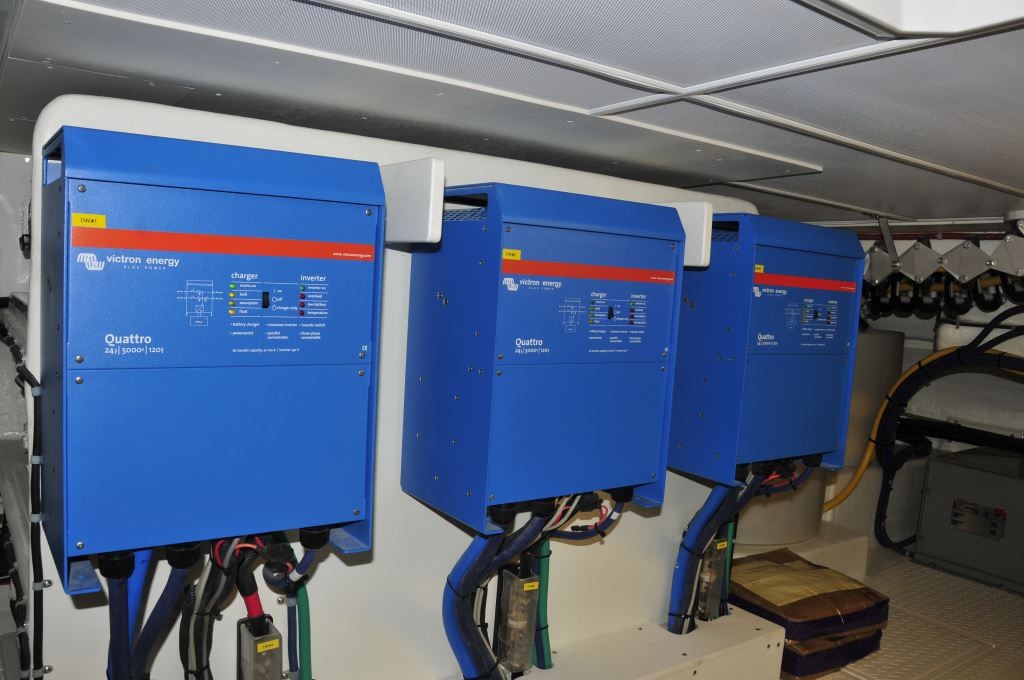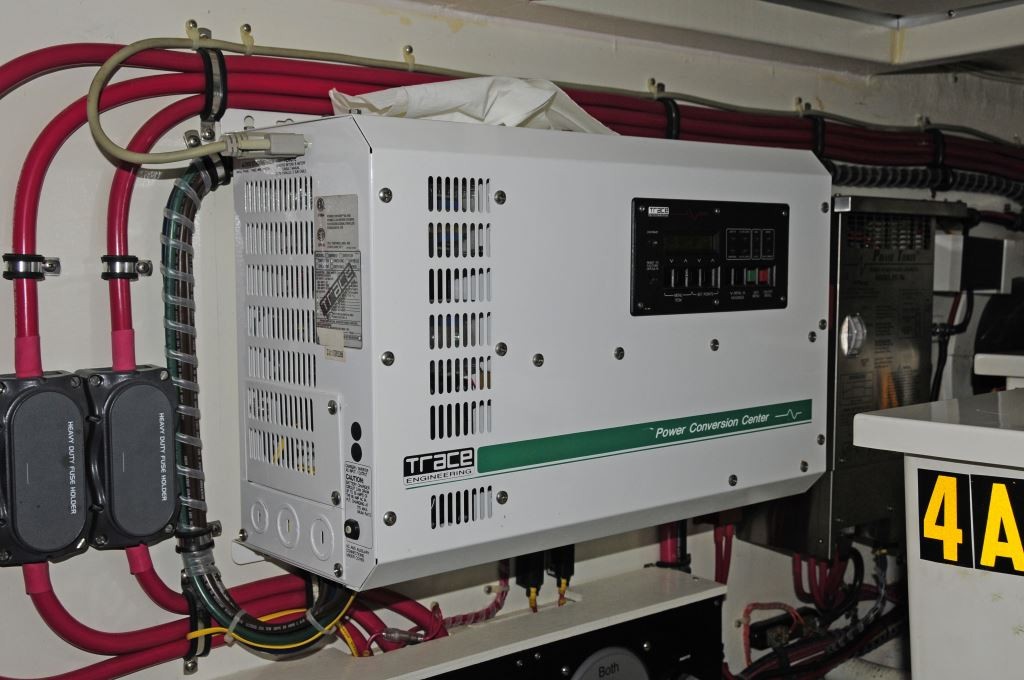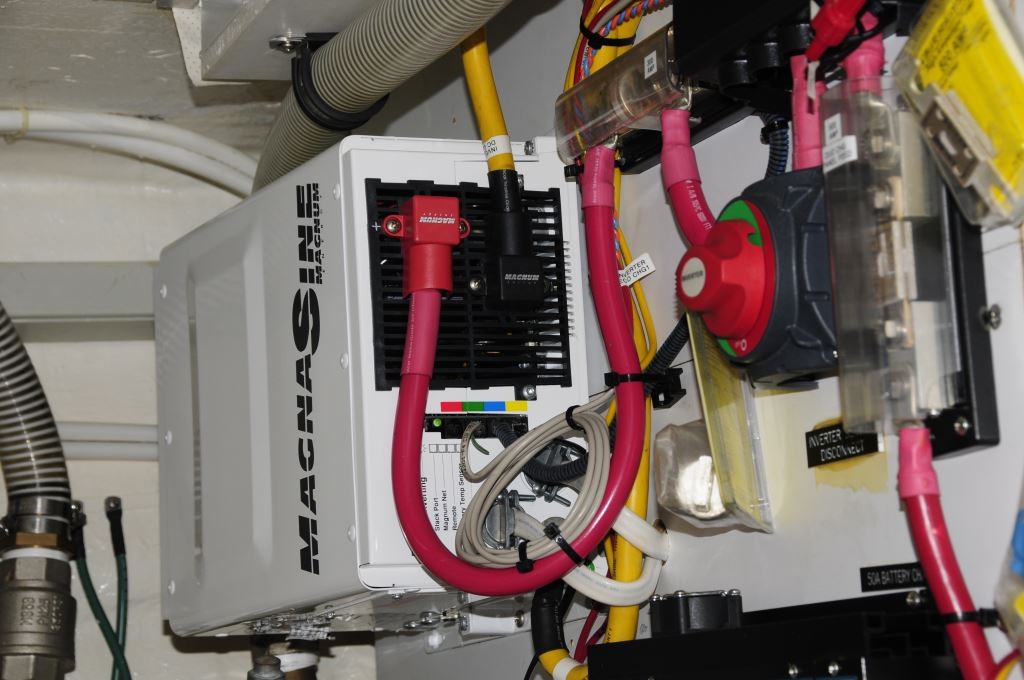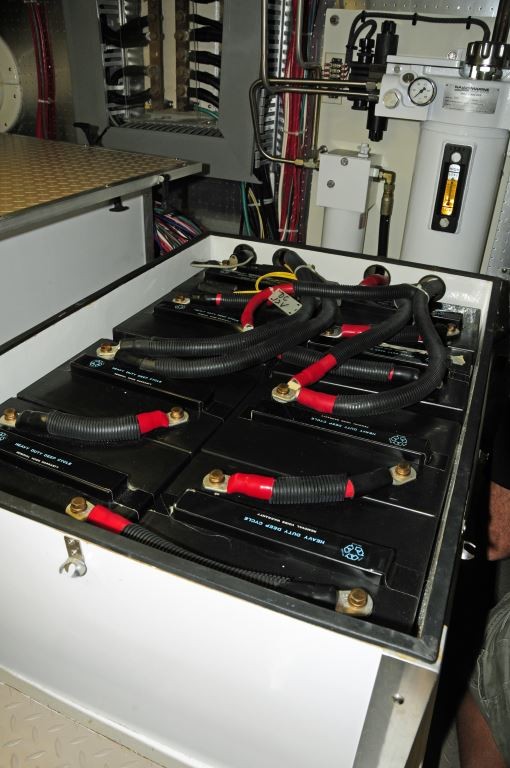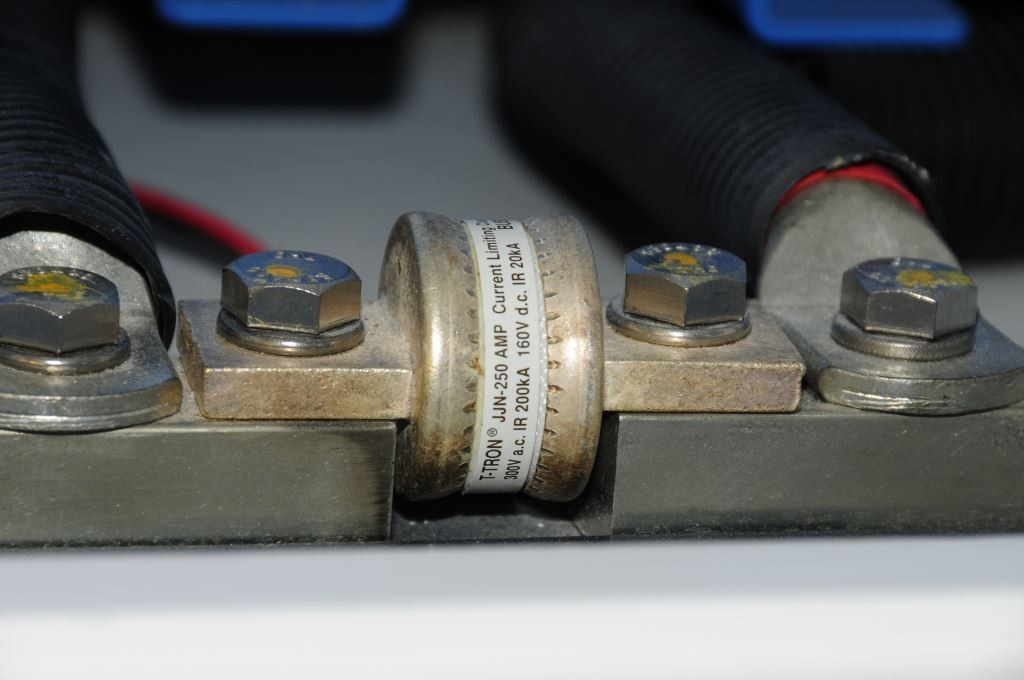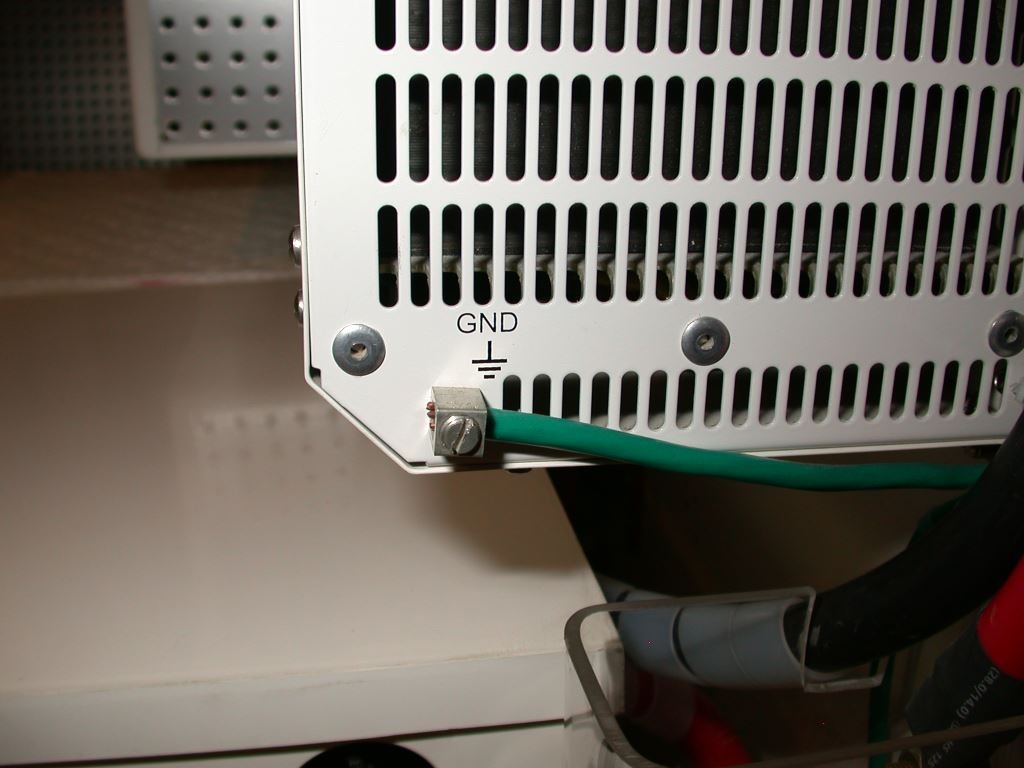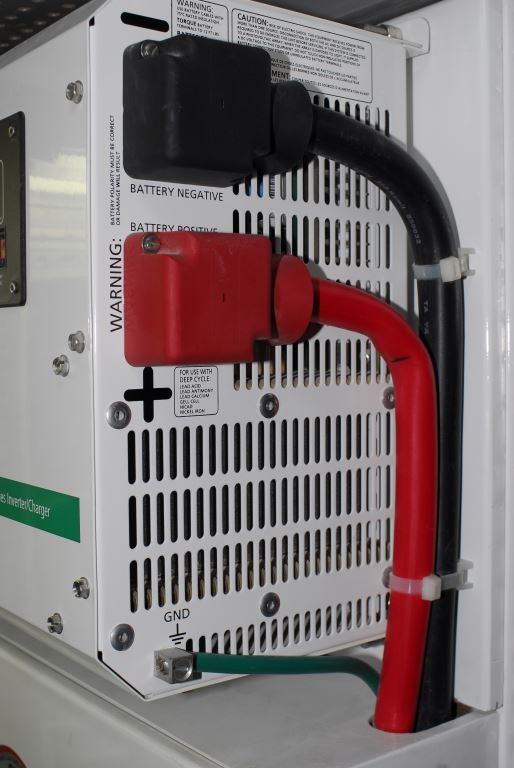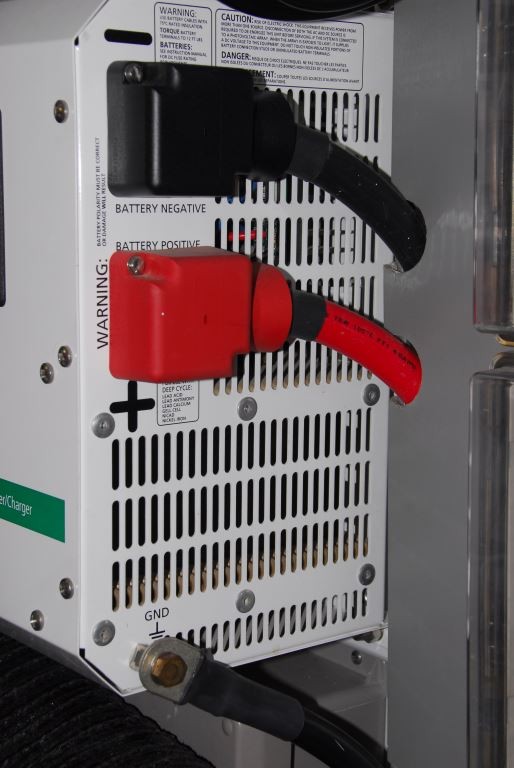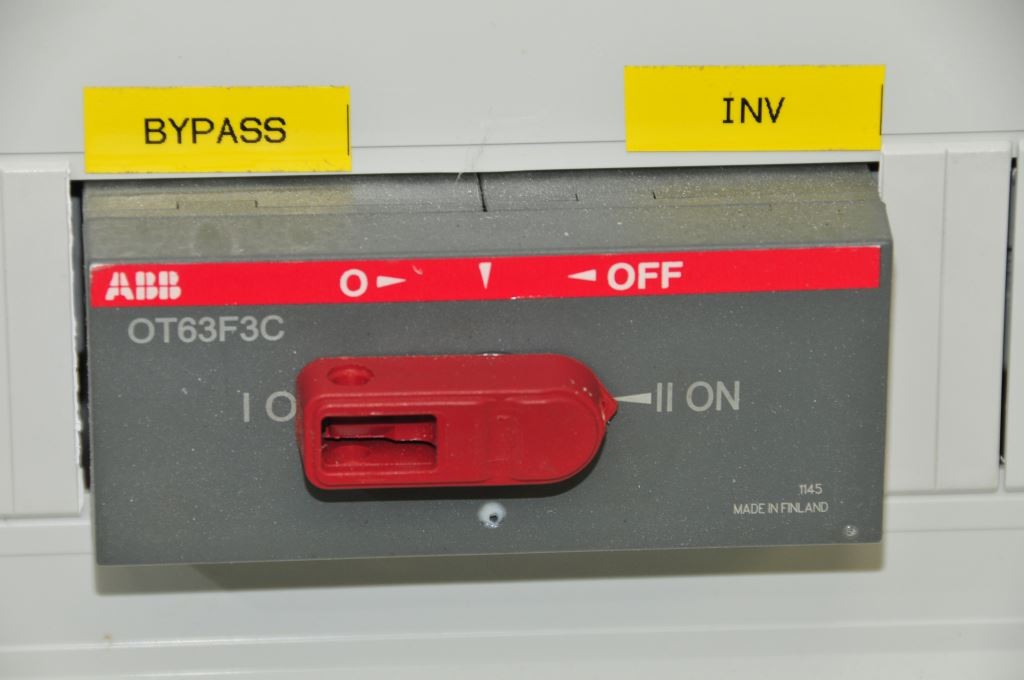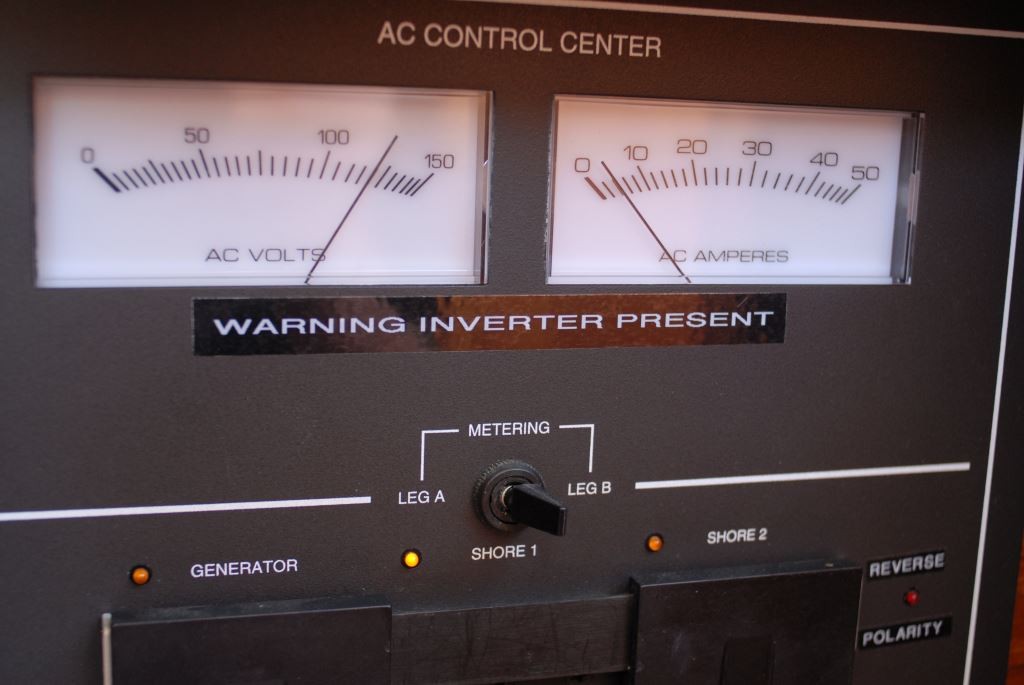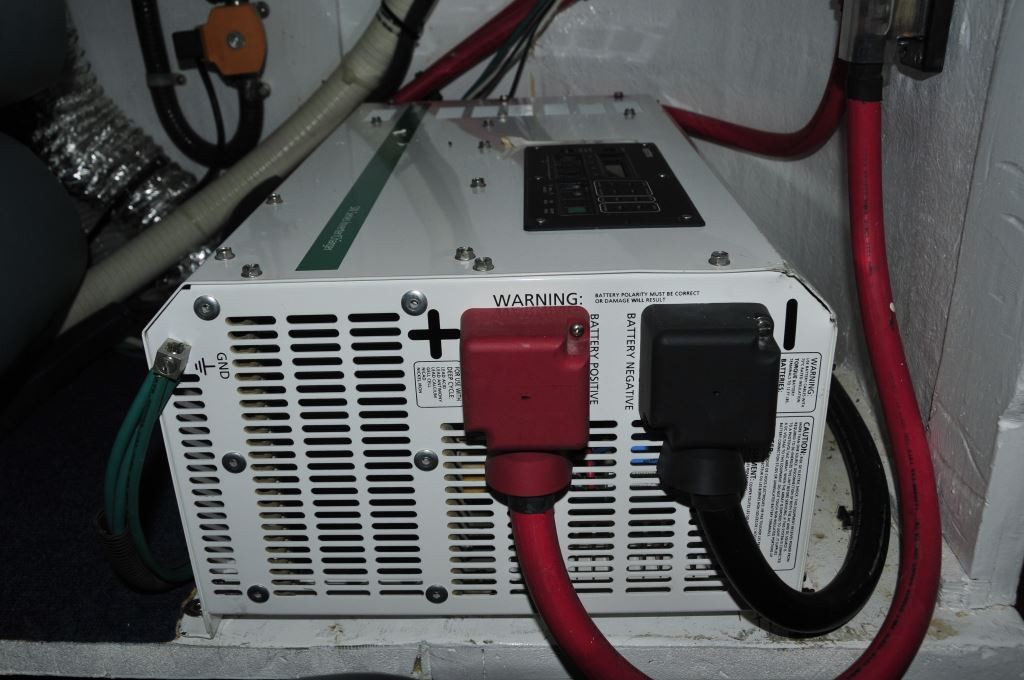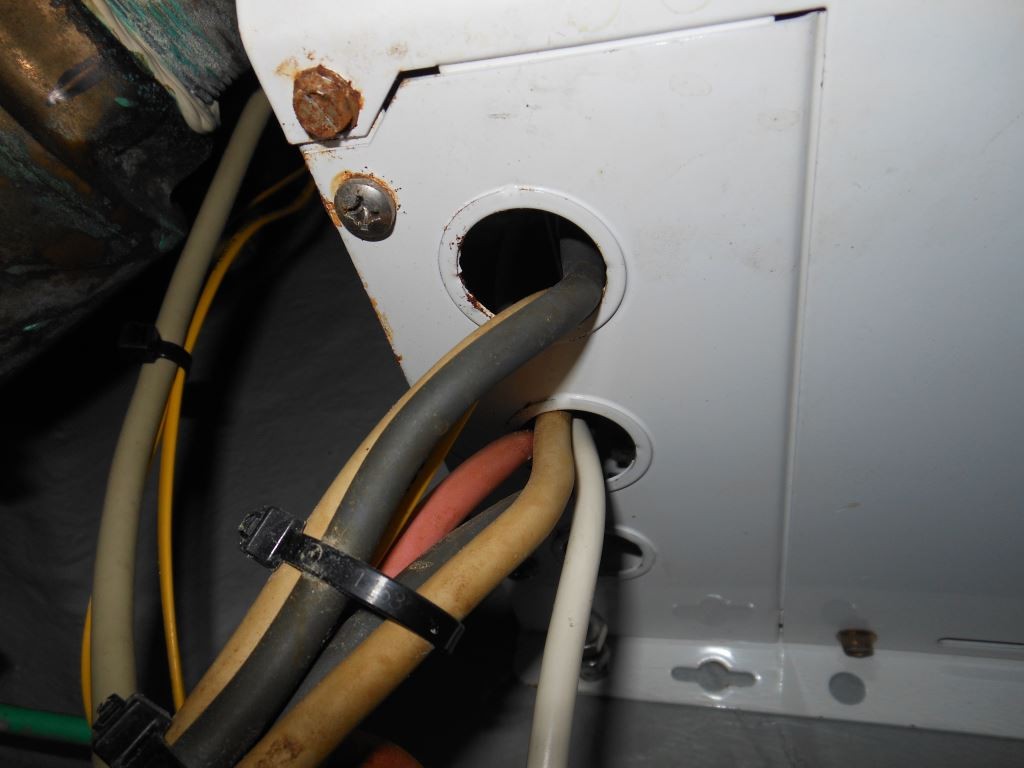From the Masthead
August 2014
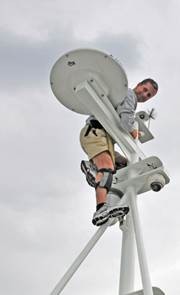
August has been a busy month for SDMC, I began writing this editorial in a hotel room in Xiamen, China. From my window on the 26th floor I have a view for which I would pay extra, rivaling any picturesque land or sea scape; I can see a port that includes scores of ships, tugboats and barges of all sizes, scattered amongst these are a series of small lighters and sampans, as well as ship builders, graving docks and repair yards. Two of these include massive bright red rolling gantry cranes, one of which was completed within the past few months, it must be over one hundred feet tall. It’s a Gearhead’s nirvana. I completed this editorial while in flight to Greenland, where I will embark aboard a Nordhavn 68 for three weeks of cruising this remote coast. Readers who know me also know my passion for high latitudes. Look for a story on this passage in the near future.
Inverter Installations; What You Need to Know.
Text and photos by Steve D’Antonio
Copyright © 2014
Today, it’s the rare cruising vessel that isn’t equipped with an inverter. However, far too many installations possess serious flaws.
Inverters are ubiquitous; it’s difficult to find a new vessel that does not come equipped with one as standard equipment and when one considers the convenience they afford it’s little wonder. Consider this scenario. You wake up early to a beautiful, serene morning in an isolated cove. You share it with just two or three other boats and the scenery is simply breathtaking. You spy an eagle soaring overhead and ashore a pair of deer nibbles green shoots near the water’s edge. What could make this scene more enjoyable? A freshly brewed cup of coffee, and a camera, of course. You head to the galley, plug in the coffee maker and start the generator, within a few minutes the eagles have fled, the deer have darted away and your formerly slumbering neighbors and mate are giving you less than friendly glances. If, on the other hand, you had an inverter, it would be entirely unnecessary to start the generator in order to operate the coffee maker and a variety of other gear that would otherwise operate from shore power.
“Stacked” inverters, which are growing in popularity, afford users the ability to operate a vessels electrical system in a near-seamless manner with shore power and generators.
Types of Inverters
When inverters were first introduced to the recreational marine industry they provided a type of power that was similar to but not quite the same as shore power and that which is provided by generators, it’s referred to as a square or modified sine wave (MSW). These produce a “stepped” form of power that’s closer to, but not the same as, the true sine wave provided by utility companies and most gensets. Certain appliances such as laser printers, electric shavers, some rechargeable flashlights, VCRs, TVs and bread makers, along with some desktop computers and uninterrupted power supplies, may not work properly if at all using MSW inverters and in some cases this gear may even be damaged if an attempt is made to operate it using a MSW. Audio devices will often exhibit a hum and video devices may show interference when used with MSW inverters. This type of inverter remains available today, and many legacy units continue to go strong, I encounter them from time to time in my consulting work.
True sine wave (TSW) inverters, on the other hand, produce a form of power that is virtually indistinguishable from utility power and in some cases the power they produce is superior to that of a generator. Provided the capacity is properly matched, all appliances running on a TSW inverter should operate in precisely the same manner in which they would when used with shore power.
Details regarding inverter installations abound, it is therefore essential that installers read and fully comprehend installation manuals and manufacturer requirements.
Why then, you might ask, would anyone continue to install or use a MSW instead of a TSW inverter? You’ve probably guessed by now, price. When comparing like quality, MSW inverters are significantly less expensive than TSW inverters. Other than the cost, how do you decide which inverter to specify or use? Among other things, if superior quality audio and video performance is important to you, and having power that is indistinguishable from the shore power, then the decision is made, TSW is the only way to go. Today, I would be hard pressed to recommend anything other than a true sine wave inverter.
How large does it need to be?
The next step in the inverter selection process is sizing. This is where many installations go terribly wrong in one of two ways. First, in many cases, the inverter is selected based either on the loads that will operate from it or based on its charge output capacity (many inverters are also sophisticated multi-step DC chargers). In those cases, with a few exceptions, the power supplied by the inverter is capable of handling most of the AC loads aboard the vessel. These might include the aforementioned audio and video entertainment system as well as satellite receivers, coffee makers, microwave ovens, lighting (although that’s not very efficient, it’s preferable to operate lighting from a “parent” source of power, i.e. 12 or 24 volt lights operating from a 12 or 24 volt battery bank, rather than converting it through an inverter with the concurrent loss of efficiency), water makers, fuel polishing systems, hair dryers etc. Items that are typically not operated by inverters of any sort include air conditioning units and water heaters. As always, there are exceptions to every rule; with the appropriate design inverters are capable of operating air conditioning compressors, although this is, for now, the exception rather than the rule.
The manner in which this installation goes wrong is the inverter size fails to take into account the start up or surge loads imparted by motor loads such as pumps or compressors. Often, start up loads can be three to five times the operating load and thus, a watermaker that draws a steady state of twelve amps at 120 volts may require a momentary start up capacity of forty-five or fifty amps. If the inverter is not appropriately sized it simply will trip its output circuit breaker.
The second manner in which an inverter selection goes wrong is in the sizing or mismatching of the source of power for the inverter, the battery bank. The inverter may have the capacity to handle all of the loads, including start ups of refrigerators and water makers, however, how long can it sustain those loads without the battery bank receiving a charge?
Whether you intend to operate high wattage gear, such as a hair dryer or microwave, on a short-term basis or moderate wattage gear, such as a refrigerator, on a long term basis, calculations must be performed to ensure the battery bank has the necessary amp-hour capacity to handle such loads. If it doesn’t, it will crash all too quickly and you may end up with a refrigerator or freezer full of spoiled food. Load calculator forms are available from most inverter manufacturers.
The size of capacity of a house battery bank should be inextricably linked with the expected inverter loads. Failing to take this into account will often lead to frequent charging and shortened battery life.
Installation
Proper, ABYC-compliant installation, as one might suspect, is the key to reliable and safe operation of this gear. The problem with inverter installations is that even when they are wrong they often operate with no outward sign of trouble, until they stop operating or, worse, fail catastrophically. The bottom line is if the inverter manufacturer installation and relevant ABYC guidelines are followed then it’s likely that the result will be safe, reliable and relatively carefree operation. It’s important to remember, the voltage and current produced by an inverter can be just as lethal as that which is brought aboard by the shore power cable or the generator, and as such inverter installations deserve the highest respect from installers and users.
Nearly all inverter manufacturers call for the use of specialized “Class T” fuses. Failure to use the correct fuse can lead to nuisance tripping or, worse, failure to interrupt current flow in the event of a short circuit.
In my work as a systems consultant, I routinely encounter inverter installation faults on both new and used vessels. Perhaps most common among these is the size of the cable used to ground the inverter’s metallic chassis. While it is common to use wire for this task that is the same size as the AC cabling (typically about 3/16” when measuring the outside diameter of the insulation), in fact, the wire should be the same size as the DC cables (often as large as large as 5/8”). That’s a considerable difference, and one I frequently debate with boat builders and service yards. They simply can’t accept that this is the case because they are not accustomed to using cable of this gauge for grounding. To make matters worse, regrettably some inverter manufacturers fail to include a bonding lug capable of accepting a wire of this gauge without modification. It’s clearly spelled out, however, in black and white in ABYC’s chapter on battery charger and inverter installations, section A-31. Paraphrased, it states…
The DC grounding conductor shall be connected from the metallic case or chassis of the battery charger, inverter or inverter/charger to the engine negative terminal or its bus, and shall be of an ampacity equal to that of the DC positive conductor.
Many inverter manufacturers either echo this guidance or they simply state that, in order to be ABYC complaint one must use cable of a given size for the chassis ground. The reason for this mega-ground requirement is, in the event one of the DC positive cable conductors makes contact with inverter’s metallic case the equally sized ground cable will safely carry the fault current to ground, where it will almost immediately blow the inverter’s externally mounted DC fuse. Simply put, there’s no substitute for this cable.
Under-sized chassis grounds are among the most common installation faults. Not only us this chassis ground wire undersized, its lug is also of the direct bearing variety, i.e. the screw turns directly against the wire’s strands, a clear violation of ABYC standards.
Another frequent oversight involves over-current protection, a fuse in this case, type and location. The fuse for the inverter’s DC positive cable must be installed within 7 inches of the battery (this distance may be increased to 72” if the cable utilizes supplemental sheathing). I frequently encounter fuses installed at the inverter where, in the event of a short in the cable between the fuse and the battery, they will be of no use. Again, following the inverter manufacturer’s and ABYC Guidelines will almost certainly yield a safe installation.
A dramatically undersized chassis ground, top, and a properly-sized chassis ground, above. Failure to utilize the correct gauge cable for this application could lead to overheated wiring and fire.
Most inverter manufacturers call for the use of Class T fuses. Class T fuses differ from ordinary fuses, even those of the same ampacity, in their interrupt capacity, which is especially important when working with large battery banks. It’s important that not just any fuse, even if it’s of the proper ampacity, be used for inverter installations. Make sure the inverter fuse meets the inverter manufacturer’s specifications. Ideally, while not mandated by ABYC, the inverter DC supply should be equipped with a service disconnect switch, enabling it to be turned off for service or in the event of a fault or, worse, a fire.
While inverter pass through relays are typically very reliable, a failure could prevent shore or generator power from flowing through an inverter, supplying the inverter bus loads. For that reason, some builders opt for an external bypass switch.
Any vessel equipped with an inverter must have a means of indicating to the user that the inverter is on and that indication must be located at the main electrical panel. Because inverters are capable of entering dormant mode where, when their output is tested with a digital volt meter it may read zero, a placard must also be applied to the panel warning users and service personnel that the vessel is equipped with an inverter. If your system lacks such a placard, purpose made decals can be purchased or, you could make your own. It should say…
WARNING
Electrical shock hazard.
Vessel is equipped with a DC to AC power inverter
Disconnect inverter DC input before servicing vessel’s electrical system
This panel includes a label, albeit an inconspicuous one, that warns users and service personnel that an inverter is present.
Inverters must not be installed directly above battery banks. There are two reasons for this prohibition. One, as batteries charge they release hydrogen gas, which is explosive. Most inverters are not ignition protected (for this reason they must never be installed in the engine compartment of a gasoline-powered vessel) and thus they are capable of igniting this gas if it enters the charger’s casing. There is no exemption for SVRLA, AGM or gel batteries in that, if over-charged they will vent hydrogen gas. Two, vapor emitted by a charging battery is corrosive and having it routinely waft through sensitive electrical components such as those found within all inverters is undesirable at best.
Most inverter manufacturers clearly establish the proper mounting orientation in their installation manuals. Inverters should not be installed with vented or louvered surfaces facing downward. This inverter is installed incorrectly; the downward facing panel is vented, which would allow hot or burning material to fall through the case, onto the wood shelf beneath, in the event of an internal fire.
On the subject of mounting, nearly all inverter manufacturers specify the orientation in which an inverter must be mounted. This requirement is related to heat dissipation, fire prevention and in some cases shedding of water. Inverters are designed to dissipate heat as it rises over internal components, the incorrect orientation can upset this capability. More importantly, some of the inverter housing’s panels are vented, these must never face downward. In the event of an internal fire, burning material could fall through and out of the inverter via these vents.
Finally, unless it is integral to the inverter, and it is installed in the correct orientation to work, a drip shield must must be installed above inverters, to afford protection from water dripping vertically onto the case.
If you are considering having an inverter installed, have the work carried out by an ABYC certified marine electrician, or at least by an electrician or yard that is a member of ABYC. Tell the technician you want to be sure it complies with sections E-11 ‘AC and DC Electrical Systems’, and section A-3 ‘Battery Chargers and Inverters’. If you have an existing inverter installation about which you have doubts, task the electrician with an inspection using the same criteria.
Yet another all too common installation fault, failure to use proprietary strain relief connectors, or “cord grips”, the result of which is a serious potential for a short circuit or electrocution.
Inverters have changed the face of cruising; they’ve made shore power possible away from shore and without the rumble of a generator. When installed and used properly they make a welcome addition to any vessel.
For more information on the services provided by Steve D’Antonio Marine Consulting, Inc. please e mail Steve at info@stevedmarineconsulting.com or call 804-776-0981

